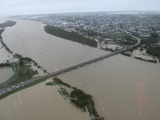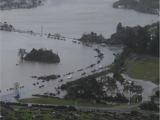A Technical Advisory Group (TAG) was established by the West Coast Regional Council (December 2021) to identify preferred flood risk mitigation structural and nature-based protection options. Seven options were considered by the TAG, factoring extensive climate change scenarios.
The favoured Westport flood mitigation scheme is as follows:
- Rock lining repair works for bank protection near O’Conor Home (two sections) and Organs Island. (This work is being progressed regardless of whether co-investment can be obtained).
- A combination of concrete wall, single board walls and double earth filled walls, with the use of each being selected to best suit site specific circumstances.
- Embankments and walls with alignment, heights, and other design parameters to reflect the results of modelling and hydrological effectiveness research carried out by Land River Sea Consulting Ltd, and design considerations put forward by G & E Williams Consulting Ltd.
- Extension of the flood risk mitigation at Carters Beach to the east to include houses along Schadick Avenue and to provide additional flood risk resilience to additional houses and the critical lifeline utility services provided by the airport.
- Revegetation of a relic Buller River meander near Organs Island.
- Re-grade the bed of Abattoir Creek to enable more flow to be diverted away from this ‘at risk’ area of urban development.





